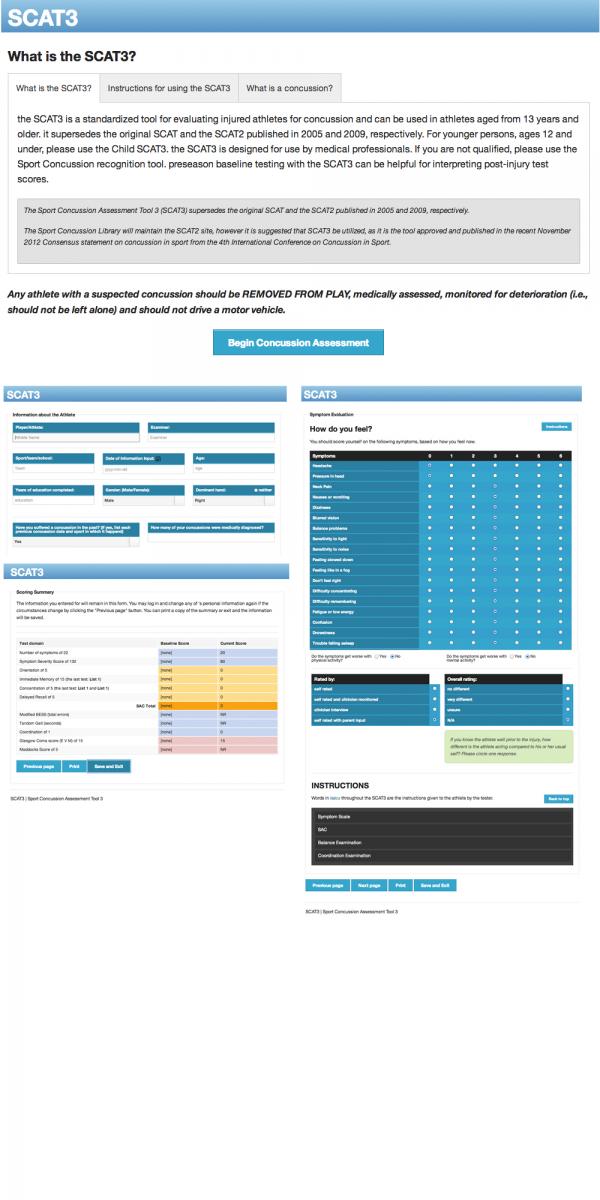Sport Concussion Assessment Tool 3 (SCAT3)
the SCAT3 is a standardized tool for evaluating injured athletes for concussion and can be used in athletes aged from 13 years and older. it supersedes the original SCAT and the SCAT2 published in 2005 and 2009, respectively.
The Sport Concussion Library will maintain the SCAT2 (Link to SCAT2) site, however it is suggested that SCAT3 be utilized, as it is the tool approved and published in the recent November 2012 Consensus statement on concussion in sport from the 4th International Conference on Concussion in Sport.
The SCAT3 is a screening evaluation tool designed for use only by qualified first responders or medical professionals. The SCAT3 score does not independently determine the diagnosis of a concussion, nor does it independently determine the injured athlete’s recovery or return to play status. Such determination can only be made by a medical professional who has experience in the treatment of sport concussion.
What is a concussion?
A concussion is a disturbance in brain function caused by a direct or indirect force to the head. It can result in a variety of symptoms and often does not involve loss of consciousness. Concussion should be suspected if any one or more of the following are present:
• physical symptoms (such as headache, dizziness or vomiting)
• physical signs (such as unsteadiness)
• impaired brain function (such as confusion or memory loss)
• abnormal behaviour.
Any individual with a suspected concussion should be removed from play and medically assessed onsite using standard emergency management principles. Particular attention should be given to excluding a cervical spine injury. For an individual with a suspected concussion, an urgent referral should be arranged to a medical professional experienced with the diagnosis and treatment of concussion.
Once first aid issues are addressed, an assessment of the concussive injury should then be made using the SCAT2 or other similar tool. Due to the possibility of delayed onset of symptoms, an individual with a suspected concussion should not be allowed to return to play the same day the injury occurred. He/she should monitored for deterioration (i.e., should not be left alone) and should not drive a motor vehicle.
Instructions for using the SCAT3
The SCAT3 is designed for use by qualified first responders and medical professionals. Preseason baseline testing with the SCAT3 can be helpful for interpreting post-injury test scores.
Note: Text in the SCAT3 displayed in italics indicates instructions to be given to the athlete by the tester.
The use of the SCAT3 is publically accessible without charge. To register as a user and use the SCAT3, click here.
